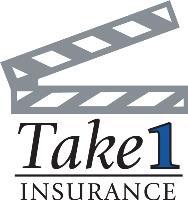
This article is sponsored by Take1 Insurance.
The phrase “climate change” is not one a lot of people want to bring up at the dinner table at family reunions. It is fraught with often-divisive ideological connotations, yet it does reflect the fact that weather is undeniably changing in ways that are harder to parse than in the past. And in the wake of a string of weather-related disasters around large live events nearly a decade ago, weather and event production are increasingly and inextricably connected.
But if weather is changing, so is the event liability insurance environment around it: contingencies concerning weather are now able to be far more granular than before. For instance, policies can be written that specify amounts of rain that can trigger a claim at an outdoor event such as a concert. Those specifications can take the form of an overall rainfall amount over a predetermined number of days or hours, or the number of dry hours — i.e., hours free of precipitation — in a day or a weekend.
This kind of exactitude increases predictability for the insurer, who will now know exactly the conditions that can trigger a valid loss claim, and for the insured, who can adjust the amounts of adverse precipitation in such a way as to optimize premium costs.
As with any metric, who and what is doing the measuring is critical. In the case of weather in general and precipitation specifically, insured and insurer must first decide on a mutually agreeable arbiter, in these cases usually the closest government-operated meteorological facility where rain and other weather data can be measured and retrieved (think weather monitoring station in and around an airport). Those same facilities can also offer both the insured and insurer necessary information on which to base the extent of coverage, with data on weather history at the site of the event over the course of previous years, as well, as the cost of coverage.
All of that information can go into creating comprehensive event liability insurance policies that cover a range of relevant negative potentialities around live-event production, from event delays and partial or complete event cancellations to non-appearance problems related to individual performers or presenters due to weather, or a myriad of other causes.
More events are now being done outdoors, from concerts to crafts festivals to special events like the NFL Draft, which in April attracted an estimated 600,000 people to downtown Nashville, Tennessee — nearly double the city’s population! — in an area that set rainfall records earlier in the year. (Fortunately, some forecast rains held off.)
Contingency insurance has come a long way in recent years, an evolution driven by the fact that, whatever the reasons behind it, weather has become less predictable even as it becomes more critical to the economic and personal-safety outcomes of large outdoor events. But adaptation to these new realities by insurance providers is helping the event-production community to feel more confident that they’re covered when it really counts.
Interested in learning more about event-liability and special-event insurance?
Click here to contact the Take1 team.







